Frédéric Jurie
ENSICAEN, UNICAEN
Disentangling Visual Transformers: Patch-level Interpretability for Image Classification
Feb 24, 2025Abstract:Visual transformers have achieved remarkable performance in image classification tasks, but this performance gain has come at the cost of interpretability. One of the main obstacles to the interpretation of transformers is the self-attention mechanism, which mixes visual information across the whole image in a complex way. In this paper, we propose Hindered Transformer (HiT), a novel interpretable by design architecture inspired by visual transformers. Our proposed architecture rethinks the design of transformers to better disentangle patch influences at the classification stage. Ultimately, HiT can be interpreted as a linear combination of patch-level information. We show that the advantages of our approach in terms of explicability come with a reasonable trade-off in performance, making it an attractive alternative for applications where interpretability is paramount.
ICPR 2024 Competition on Domain Adaptation and GEneralization for Character Classification (DAGECC)
Dec 23, 2024Abstract:In this companion paper for the DAGECC (Domain Adaptation and GEneralization for Character Classification) competition organized within the frame of the ICPR 2024 conference, we present the general context of the tasks we proposed to the community, we introduce the data that were prepared for the competition and we provide a summary of the results along with a description of the top three winning entries. The competition was centered around domain adaptation and generalization, and our core aim is to foster interest and facilitate advancement on these topics by providing a high-quality, lightweight, real world dataset able to support fast prototyping and validation of novel ideas.
LATENTPATCH: A Non-Parametric Approach for Face Generation and Editing
Jan 30, 2024



Abstract:This paper presents LatentPatch, a new method for generating realistic images from a small dataset of only a few images. We use a lightweight model with only a few thousand parameters. Unlike traditional few-shot generation methods that finetune pre-trained large-scale generative models, our approach is computed directly on the latent distribution by sequential feature matching, and is explainable by design. Avoiding large models based on transformers, recursive networks, or self-attention, which are not suitable for small datasets, our method is inspired by non-parametric texture synthesis and style transfer models, and ensures that generated image features are sampled from the source distribution. We extend previous single-image models to work with a few images and demonstrate that our method can generate realistic images, as well as enable conditional sampling and image editing. We conduct experiments on face datasets and show that our simplistic model is effective and versatile.
SimPINNs: Simulation-Driven Physics-Informed Neural Networks for Enhanced Performance in Nonlinear Inverse Problems
Sep 27, 2023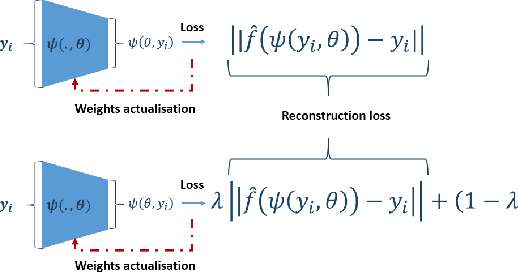
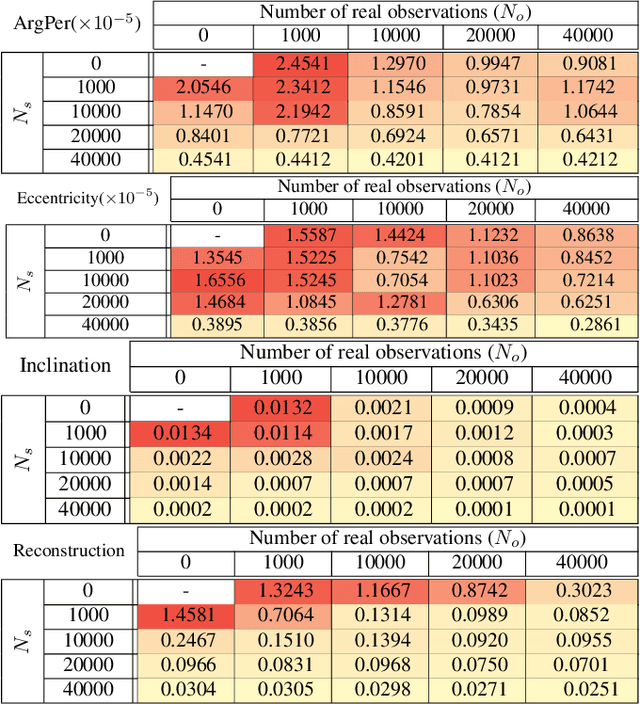
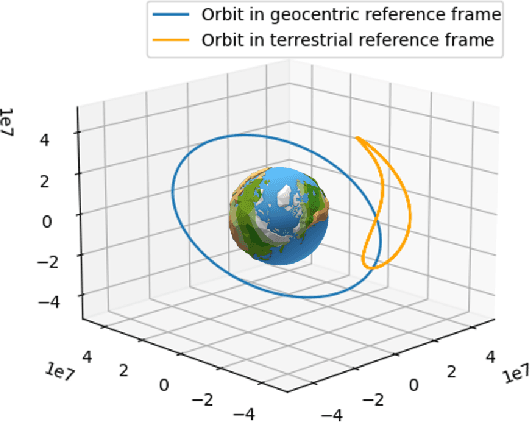
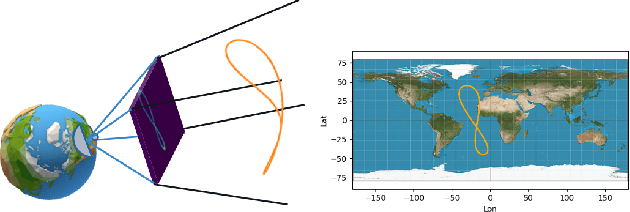
Abstract:This paper introduces a novel approach to solve inverse problems by leveraging deep learning techniques. The objective is to infer unknown parameters that govern a physical system based on observed data. We focus on scenarios where the underlying forward model demonstrates pronounced nonlinear behaviour, and where the dimensionality of the unknown parameter space is substantially smaller than that of the observations. Our proposed method builds upon physics-informed neural networks (PINNs) trained with a hybrid loss function that combines observed data with simulated data generated by a known (approximate) physical model. Experimental results on an orbit restitution problem demonstrate that our approach surpasses the performance of standard PINNs, providing improved accuracy and robustness.
Text-to-Image Models for Counterfactual Explanations: a Black-Box Approach
Sep 14, 2023



Abstract:This paper addresses the challenge of generating Counterfactual Explanations (CEs), involving the identification and modification of the fewest necessary features to alter a classifier's prediction for a given image. Our proposed method, Text-to-Image Models for Counterfactual Explanations (TIME), is a black-box counterfactual technique based on distillation. Unlike previous methods, this approach requires solely the image and its prediction, omitting the need for the classifier's structure, parameters, or gradients. Before generating the counterfactuals, TIME introduces two distinct biases into Stable Diffusion in the form of textual embeddings: the context bias, associated with the image's structure, and the class bias, linked to class-specific features learned by the target classifier. After learning these biases, we find the optimal latent code applying the classifier's predicted class token and regenerate the image using the target embedding as conditioning, producing the counterfactual explanation. Extensive empirical studies validate that TIME can generate explanations of comparable effectiveness even when operating within a black-box setting.
Adversarial Counterfactual Visual Explanations
Mar 17, 2023



Abstract:Counterfactual explanations and adversarial attacks have a related goal: flipping output labels with minimal perturbations regardless of their characteristics. Yet, adversarial attacks cannot be used directly in a counterfactual explanation perspective, as such perturbations are perceived as noise and not as actionable and understandable image modifications. Building on the robust learning literature, this paper proposes an elegant method to turn adversarial attacks into semantically meaningful perturbations, without modifying the classifiers to explain. The proposed approach hypothesizes that Denoising Diffusion Probabilistic Models are excellent regularizers for avoiding high-frequency and out-of-distribution perturbations when generating adversarial attacks. The paper's key idea is to build attacks through a diffusion model to polish them. This allows studying the target model regardless of its robustification level. Extensive experimentation shows the advantages of our counterfactual explanation approach over current State-of-the-Art in multiple testbeds.
Diffusion Models for Counterfactual Explanations
Mar 29, 2022



Abstract:Counterfactual explanations have shown promising results as a post-hoc framework to make image classifiers more explainable. In this paper, we propose DiME, a method allowing the generation of counterfactual images using the recent diffusion models. By leveraging the guided generative diffusion process, our proposed methodology shows how to use the gradients of the target classifier to generate counterfactual explanations of input instances. Further, we analyze current approaches to evaluate spurious correlations and extend the evaluation measurements by proposing a new metric: Correlation Difference. Our experimental validations show that the proposed algorithm surpasses previous State-of-the-Art results on 5 out of 6 metrics on CelebA.
On the inductive biases of deep domain adaptation
Sep 16, 2021



Abstract:Domain alignment is currently the most prevalent solution to unsupervised domain-adaptation tasks and are often being presented as minimizers of some theoretical upper-bounds on risk in the target domain. However, further works revealed severe inadequacies between theory and practice: we consolidate this analysis and confirm that imposing domain invariance on features is neither necessary nor sufficient to obtain low target risk. We instead argue that successful deep domain adaptation rely largely on hidden inductive biases found in the common practice, such as model pre-training or design of encoder architecture. We perform various ablation experiments on popular benchmarks and our own synthetic transfers to illustrate their role in prototypical situations. To conclude our analysis, we propose to meta-learn parametric inductive biases to solve specific transfers and show their superior performance over handcrafted heuristics.
Towards a General Model of Knowledge for Facial Analysis by Multi-Source Transfer Learning
Nov 08, 2019

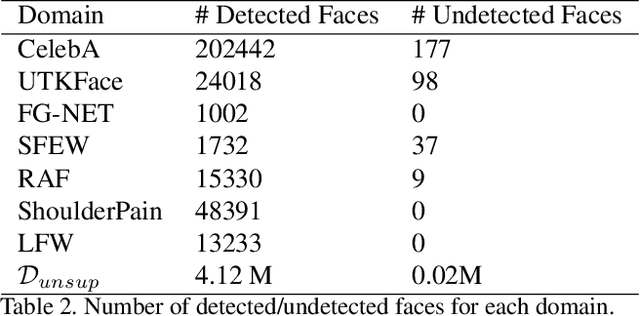

Abstract:This paper proposes a step toward obtaining general models of knowledge for facial analysis, by addressing the question of multi-source transfer learning. More precisely, the proposed approach consists in two successive training steps: the first one consists in applying a combination operator to define a common embedding for the multiple sources materialized by different existing trained models. The proposed operator relies on an auto-encoder, trained on a large dataset, efficient both in terms of compression ratio and transfer learning performance. In a second step we exploit a distillation approach to obtain a lightweight student model mimicking the collection of the fused existing models. This model outperforms its teacher on novel tasks, achieving results on par with state-of-the-art methods on 15 facial analysis tasks (and domains), at an affordable training cost. Moreover, this student has 75 times less parameters than the original teacher and can be applied to a variety of novel face-related tasks.
n-MeRCI: A new Metric to Evaluate the Correlation Between Predictive Uncertainty and True Error
Aug 20, 2019



Abstract:As deep learning applications are becoming more and more pervasive in robotics, the question of evaluating the reliability of inferences becomes a central question in the robotics community. This domain, known as predictive uncertainty, has come under the scrutiny of research groups developing Bayesian approaches adapted to deep learning such as Monte Carlo Dropout. Unfortunately, for the time being, the real goal of predictive uncertainty has been swept under the rug. Indeed, these approaches are solely evaluated in terms of raw performance of the network prediction, while the quality of their estimated uncertainty is not assessed. Evaluating such uncertainty prediction quality is especially important in robotics, as actions shall depend on the confidence in perceived information. In this context, the main contribution of this article is to propose a novel metric that is adapted to the evaluation of relative uncertainty assessment and directly applicable to regression with deep neural networks. To experimentally validate this metric, we evaluate it on a toy dataset and then apply it to the task of monocular depth estimation.
 Add to Chrome
Add to Chrome Add to Firefox
Add to Firefox Add to Edge
Add to Edge